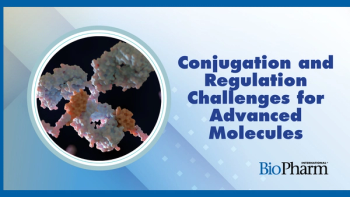
FDA Provides Update on New Drugs Regulatory Program
Yoni Tyberg, associate director of the Special Program Staff in the Office of New Drugs, provided an update on efforts to modernize CDER processes.
On June 24, 2024, FDA posted a conversation on its website with Yoni Tyberg, associate director of the Special Program Staff in the Office of New Drugs, regarding the progress of the modernization of the New Drug Regulatory Program (NDRP). NDRP’s modernization goal, which began in 2017, is to increase the efficiency and effectiveness of the processes of the Center for Drug Evaluation and Research (CDER). This initiative was spurred by the ever-increasing growth of genetic science, personalized medicine, and treatments for rare diseases.
According to Tyberg, NDRP began with a diagnostic phase to assess areas in need of improvement. A plan was then developed with six core objectives: scientific leadership; integrated assessment; operational excellence; benefit-risk monitoring; managing talent; and knowledge management. Seven task clusters were also created for achieving the objectives. The plan then moved into the implementation phase.
Accomplishments of the NDRP so far include improvement of advisory committee structure and improved committee tools and processes through the work of the advisory committee workstream.
“The workstream enhanced areas of the advisory committee planningprocess such as clarifying when a committee meeting is appropriate, streamlining the process for recruiting and retaining experts for the committees, and developing accessible resources for FDA review teams,” Tyberg said (1). “These new resources included a tool to help review teams determine whether an advisory committee meeting is appropriate, an educational reference guide, technology/knowledge management platforms for CDER staff, learning modules for advisory committee experts, and a template to help staff efficiently produce streamlined advisory committee briefing documents. These changes helped promote more efficient advisory committee meetings that were better able to provide well-informed, clear, and consistent expert advice.”
The Investigational New Drug (IND) Review Management helped streamline the IND review process and implemented new review templates for IND 30-day safety and protocol and amendment reviews.
“It also transitioned the IND 30-day safety reviews into an automated workflow system to enhance efficiency, collaboration, knowledge management, and process standardization. This workstream collected multiple rounds of feedback from reviewers and regulatory program managers to ensure the templates and processes were designed for a specific purpose and implemented successfully,” said Tyberg.
Additional pathways for the CDER office to work together were created under the NDRP modernization’s scientific leadership objective, so partners within and outside of FDA can share information to develop ways to treat and prevent COVID-19. NDRP also impacted public health by identifying risks across the lifecycle of a drug through its Benefit-Risk Monitoring objective.
“We have several short-term goals and next steps we hope to accomplish in the coming year, along with a number of endeavors planned for the future,” Tyberg said. “We plan to add improvements based on user input for the dashboards we’ve developed, such as integrating them into the review workflows for easier access to important product lifecycle information. Another planned improvement is for the Information Request focused dashboard, which provides the ability to search and filter information requests. It will receive additional improvements to help its integration with the review workflows and enable better lifecycle tracking and search capabilities.”
More information on the program’s achievements can be found in the
Reference
1. FDA. Modernizing the New Drugs Regulatory Program. FDA.gov. June 24, 2024.
Source:
Newsletter
Stay at the forefront of biopharmaceutical innovation—subscribe to BioPharm International for expert insights on drug development, manufacturing, compliance, and more.




